| Listing 1 - 10 of 120 | << page >> |
Sort by
|
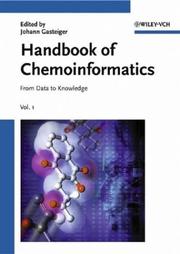
ISBN: 3527306803 9783527306800 Year: 2003 Publisher: Weinheim Wiley-VCH
Abstract | Keywords | Export | Availability | Bookmark
 Loading...
Loading...Choose an application
- Reference Manager
- EndNote
- RefWorks (Direct export to RefWorks)
Cheminformatics --- Chemical informatics --- Chemiinformatics --- Chemoinformatics --- Chemistry informatics --- Chemistry --- Information science --- Data processing --- Computational chemistry
Book
ISBN: 9783110300079 9783110254075 3110254077 3110300079 3110254077 Year: 2013 Publisher: Berlin Boston
Abstract | Keywords | Export | Availability | Bookmark
 Loading...
Loading...Choose an application
- Reference Manager
- EndNote
- RefWorks (Direct export to RefWorks)
More than 20 years of experience in molecular structure generation, from conceptualization through to applications Innovative, interdisciplinary text demonstrating example queries with software packages such as MOLGEN-online Detailed explanations on establishing QSPRs and QSARs as well as structure elucidation using mass spectrometry and structure generation. Aims and Scope This work provides an introduction to mathematical modeling of molecules and the resulting applications (structure generation, structure elucidation, QSAR/QSPR etc.). Most chemists have experimented with some software that represents molecules in an electronic form, and such models and applications are of increasing interest in diverse and growing fields such as drug discovery, environmental science and metabolomics. Furthermore, structure generation remains the only way to systematically create molecules that are not (yet) present in a database. This book starts with the mathematical theory behind representing molecules, explaining chemical concepts in mathematical terms and providing exercises that can be completed online. The later chapters cover applications of the theory, with detailed explanations on QSPR and QSAR investigations and finally structure elucidation combining mass spectrometry and structure generation. This book is aimed in particular at the users of structure generation methods and corresponding techniques, but also for those interested in teaching and learning mathematical chemistry, and for software designers in chemoinformatics.
Cheminformatics. --- Chemistry --- Mathematics. --- Chemical informatics --- Chemiinformatics --- Chemoinformatics --- Chemistry informatics --- Information science --- Data processing
Book
ISBN: 1633213692 9781633213692 9781633213548 1633213544 Year: 2014 Publisher: New York
Abstract | Keywords | Export | Availability | Bookmark
 Loading...
Loading...Choose an application
- Reference Manager
- EndNote
- RefWorks (Direct export to RefWorks)
Chemistry --- Cheminformatics. --- Chemical informatics --- Chemiinformatics --- Chemoinformatics --- Chemistry informatics --- Information science --- Computational chemistry --- Data processing. --- Data processing
Book
ISBN: 3031076575 3031076583 Year: 2022 Publisher: Cham, Switzerland : Springer,
Abstract | Keywords | Export | Availability | Bookmark
 Loading...
Loading...Choose an application
- Reference Manager
- EndNote
- RefWorks (Direct export to RefWorks)
Cheminformatics. --- Chemical informatics --- Chemiinformatics --- Chemoinformatics --- Chemistry informatics --- Chemistry --- Information science --- Computational chemistry --- Data processing
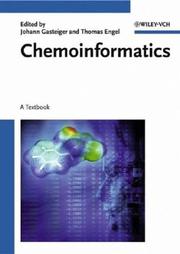
ISBN: 9783527306817 3527306811 Year: 2003 Publisher: Weinheim Wiley-VCH
Abstract | Keywords | Export | Availability | Bookmark
 Loading...
Loading...Choose an application
- Reference Manager
- EndNote
- RefWorks (Direct export to RefWorks)
Cheminformatics --- Chimio-informatique --- Chemical informatics --- Chemiinformatics --- Chemoinformatics --- Chemistry informatics --- Chemistry --- Information science --- Data processing --- Cheminformatics. --- Computational chemistry
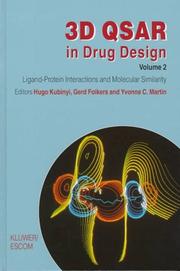
ISBN: 1280043199 9786610043194 0306468573 0792347900 Year: 1998 Publisher: Dordrecht : Springer Netherlands : Imprint: Springer,
Abstract | Keywords | Export | Availability | Bookmark
 Loading...
Loading...Choose an application
- Reference Manager
- EndNote
- RefWorks (Direct export to RefWorks)
Significant progress has been made in the study of three-dimensional quantitative structure-activity relationships (3D QSAR) since the first publication by Richard Cramer in 1988 and the first volume in the series. 3D QSAR in Drug Design. Theory, Methods and Applications, published in 1993. The aim of that early book was to contribute to the understanding and the further application of CoMFA and related approaches and to facilitate the appropriate use of these methods. Since then, hundreds of papers have appeared using the quickly developing techniques of both 3D QSAR and computational sciences to study a broad variety of biological problems. Again the editor(s) felt that the time had come to solicit reviews on published and new viewpoints to document the state of the art of 3D QSAR in its broadest definition and to provide visions of where new techniques will emerge or new appli- tions may be found. The intention is not only to highlight new ideas but also to show the shortcomings, inaccuracies, and abuses of the methods. We hope this book will enable others to separate trivial from visionary approaches and me-too methodology from in- vative techniques. These concerns guided our choice of contributors. To our delight, our call for papers elicited a great many manuscripts.
Chemistry. --- Chemoinformatics. --- Computer Applications in Chemistry. --- Chemical informatics --- Chemiinformatics --- Chemoinformatics --- Chemistry informatics --- Chemistry --- Information science --- Computational chemistry --- Data processing
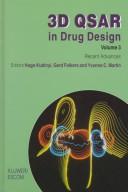
ISBN: 1280043202 9786610043200 0306468581 0792347919 9780792347910 Year: 1998 Volume: 3 Publisher: Dordrecht : Springer Netherlands : Imprint: Springer,
Abstract | Keywords | Export | Availability | Bookmark
 Loading...
Loading...Choose an application
- Reference Manager
- EndNote
- RefWorks (Direct export to RefWorks)
Significant progress has been made in the study of three-dimensional quantitative structure-activity relationships (3D QSAR) since the first publication by Richard Cramer in 1988 and the first volume in the series, 3D QSAR in Drug Design. Theory, Methods and Applications, published in 1993. The aim of that early book was to contribute to the understanding and the further application of CoMFA and related approaches and to facilitate the appropriate use of these methods. Since then, hundreds of papers have appeared using the quickly developing techniques of both 3D QSAR and computational sciences to study a broad variety of biological problems. Again the editor(s) felt that the time had come to solicit reviews on published and new viewpoints to document the state of the art of 3D QSAR in its broadest definition and to provide visions of where new techniques will emerge or new appli- tions may be found. The intention is not only to highlight new ideas but also to show the shortcomings, inaccuracies, and abuses of the methods. We hope this book will enable others to separate trivial from visionary approaches and me-too methodology from in- vative techniques. These concerns guided our choice of contributors. To our delight, our call for papers elicited a great many manuscripts.
Drugs --- QSAR (Biochemistry) --- Design. --- Chemistry. --- Chemoinformatics. --- Computer Applications in Chemistry. --- Chemical informatics --- Chemiinformatics --- Chemoinformatics --- Chemistry informatics --- Chemistry --- Information science --- Computational chemistry --- Data processing --- Cheminformatics.
Book
ISBN: 1789856914 1789853664 Year: 2020 Publisher: London : IntechOpen,
Abstract | Keywords | Export | Availability | Bookmark
 Loading...
Loading...Choose an application
- Reference Manager
- EndNote
- RefWorks (Direct export to RefWorks)
Bioinformatics. --- Cheminformatics. --- Computational biology. --- Chemical informatics --- Chemiinformatics --- Chemoinformatics --- Chemistry informatics --- Chemistry --- Information science --- Computational chemistry --- Bio-informatics --- Biological informatics --- Biology --- Computational biology --- Systems biology --- Data processing --- Computational biology series
Book

ISBN: 3110492458 9783110493955 Year: 2022 Publisher: Berlin Boston
Abstract | Keywords | Export | Availability | Bookmark
 Loading...
Loading...Choose an application
- Reference Manager
- EndNote
- RefWorks (Direct export to RefWorks)
In Silico Chemistry and Biology: Current and Future Prospects provides a compact overview on recent advances in this highly dynamic branch of chemistry. Various methods of protein modelling and computer-assisted drug design are presented, including fragment- and ligand-based approaches. Many successful practical applications of these techniques are demonstrated. The authors also look to the future and describe the main challenges of the field.
Cheminformatics. --- Chemistry --- Bioinformatics. --- Biology --- SCIENCE / Chemistry / Computational & Molecular Modeling. --- Information science --- Computational chemistry --- Chemical informatics --- Chemiinformatics --- Chemistry informatics --- Chemoinformatics --- Computational biology --- Systems biology --- Bio-informatics --- Biological informatics --- Life sciences --- Life (Biology) --- Natural history --- Physical sciences --- Computer simulation. --- Experiments --- Data processing
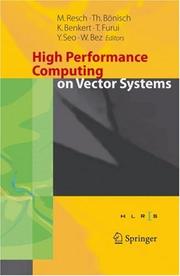
ISBN: 1280866004 9786610866007 3540350748 3540291245 Year: 2006 Publisher: Berlin ; New York : Springer-Verlag,
Abstract | Keywords | Export | Availability | Bookmark
 Loading...
Loading...Choose an application
- Reference Manager
- EndNote
- RefWorks (Direct export to RefWorks)
InMarch2005about40scientistsfromEurope,JapanandtheUScametogether the second time to discuss ways to achieve sustained performance on superc- puters in the range of Tera?ops. The workshop held at the High Performance Computing Center Stuttgart (HLRS) was the second of this kind. The ?rst one had been held in May 2004. At both workshops hardware and software issues were presented and applications were discussed that have the potential to scale and achieve a very high level of sustained performance. The workshops are part of a collaboration formed to bring to life a concept that was developed in 2000 at HLRS and called the “Tera?op Workbench”. The purpose of the collaboration into which HLRS and NEC entered in 2004 was to turn this concept into a real tool for scientists and engineers. Two main goals were set out by both partners: • To show for a variety of applications from di?erent ?elds that a sustained level of performance in the range of several Tera?ops is possible. • To show that di?erent platforms (vector based systems, cluster systems) can be coupled to create a hybrid supercomputer system from which applications can harness an even higher level of sustained performance.
High performance computing --- Vector processing (Computer science) --- Processing, Vector (Computer science) --- Electronic data processing --- Computer science. --- Chemistry. --- Computational Science and Engineering. --- Computer Applications in Chemistry. --- Processor Architectures. --- Numerical and Computational Physics, Simulation. --- Physical sciences --- Informatics --- Science --- Computer mathematics. --- Chemoinformatics. --- Microprocessors. --- Physics. --- Natural philosophy --- Philosophy, Natural --- Dynamics --- Minicomputers --- Chemical informatics --- Chemiinformatics --- Chemoinformatics --- Chemistry informatics --- Chemistry --- Information science --- Computational chemistry --- Computer mathematics --- Mathematics --- Data processing
| Listing 1 - 10 of 120 | << page >> |
Sort by
|

 Search
Search Feedback
Feedback About UniCat
About UniCat  Help
Help News
News